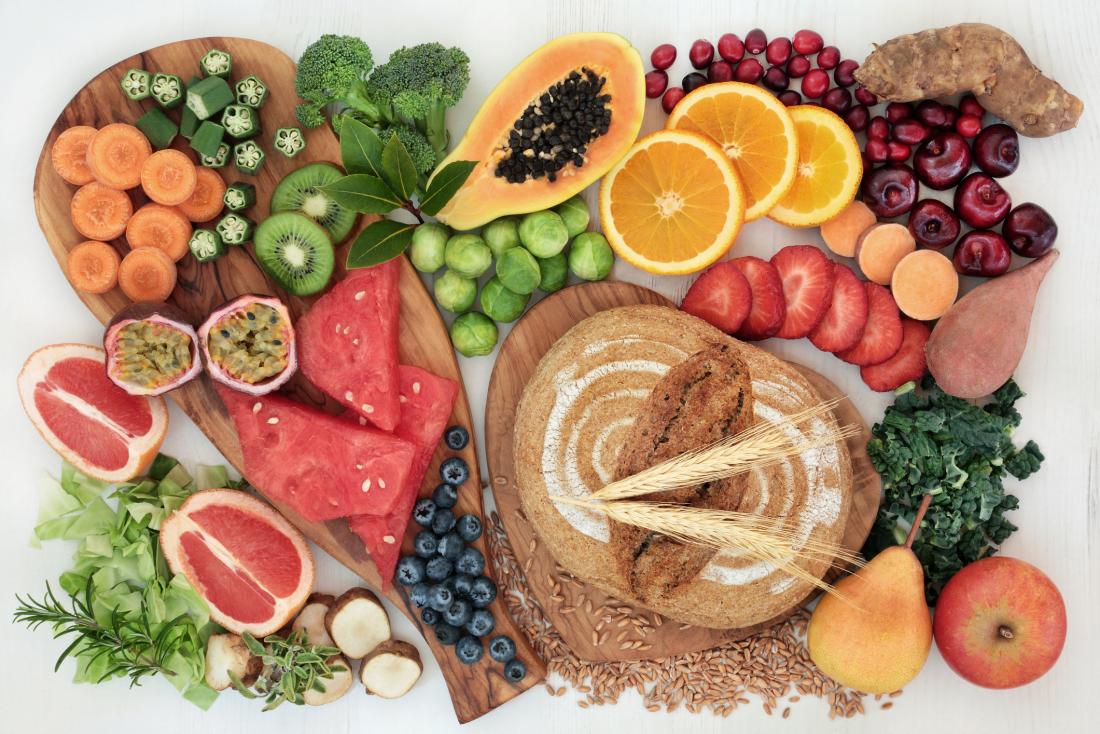Scientists studying an array of fiber sources show which fiber molecules benefit a group of gut bacteria in a mouse model.

Which sources of fiber are best for the microbiome?
For more research-backed information about the microbiome and how it affects your health, please visit our dedicated hub.
Western diets are typically high in saturated fats and sugar and low in fiber. But there is plenty of evidence that our way of eating does not agree with our gut microbiome.
Our microbial passengers are crucial to our health. They help us digest our food, are essential to the immune system, and may be linked to an even wider array of health aspects, such as mental and cardiometabolic health.
Earlier this year, Medical News Today reported on a World Health Organization-commissioned meta-analysis that indicated that eating between 25 and 29 grams of fiber each day correlates with a lower incidence of type 2 diabetes, heart disease, stroke, and colon cancer.
While doctors advise some people to follow a low fiber diet due to specific health conditions, such as inflammatory bowel disorder, for most people, a high fiber diet is key for gut health.
The
But what sources of fiber are best, and which molecules in fiber do our gut microbes respond to?
A team of researchers from Washington University School of Medicine, in St. Louis, MO, along with international collaborators, set out to answer these questions with a long term view of developing what they call microbiota directed foods, to improve our health.
“Fiber is understood to be beneficial,” explains senior study author Dr. Jeffrey Gordon, a professor and director of the Edison Family Center for Genome Sciences & Systems Biology, at Washington University School of Medicine.
“But fiber is actually a very complicated mixture of many different components. Moreover, fibers from different plant sources that are processed in different ways during food manufacturing have different constituents,” he continues. “Unfortunately, we lack detailed knowledge of these differences and their biological significance.”
To test how different fiber sources affect the abundance of gut bacteria, Dr. Gordon and his colleagues turned to mice.
The animals in their study were bred under sterile conditions, which means that they did not have their own gut microbiomes. Instead, they each received a cocktail of 20 strains of the common gut bacterium Bacteroides, which the team had isolated from a human gut.
Each mouse subsequently ate a specific diet for 4 weeks, made up of a base diet with added fiber.
The base diet contained high quantities of saturated fats and low quantities of fruits and vegetables. The team used this as a model of a Western diet, which is typically high in fats and low in fiber. To each base diet, they added different fiber types.
The team tested 34 different sources of dietary fiber, including pea protein, citrus peel, citrus pectin, tomato peel, orange fiber, apple fiber, oat hull fiber, cocoa, chia seeds, and rice bran. In total, this resulted in 144 different diet combinations.
They then analyzed how the 20 different bacterial strains reacted to the presence of the various fiber sources.
In total, 21 of the combinations had significant effects, allowing the researchers to identify the strains’ “distinct nutrient harvesting capabilities,” as they explain in their paper.
Specifically, B. thetaiotaomicron abundance increased in the presence of citrus pectin and pea fiber, while B. ovatus levels rose in the presence of barley beta-glucan and barley bran. Other fibers that resulted in an increase in members of the Bacteroides strains in the study were high molecular weight inulin, resistant maltodextrin, and psyllium.
Delving deeper, the team identified which bioactive carbohydrates in the fiber preparations provided the preferred food sources for the different strains.
First author Michael L. Patnode, a postdoctoral researcher working with Dr. Gordon, explains, “Our experiments showed that in pea fiber, the active molecular constituents included a type of polysaccharide called arabinan, whereas in citrus pectin recovered from orange peels, another type of polysaccharide, called homogalacturonan, was responsible for expansion of the bacteria.”
The team also looked at how some of the Bacteroides strains in the study interacted with each other when presented with different fiber sources. They found that hierarchical relationships between the strains were specific for each fiber.
“A healthy human gut microbiota has great strain level diversity,” the team explain in the paper. “Determining which strains representing a given species to select as a lead candidate probiotic agent or for incorporation into synbiotic (prebiotic plus probiotic) formulations is a central challenge for those seeking to develop next generation microbiota-directed therapeutics.”
“Cracking the code of what dietary ingredients beneficial microbes covet is a key to designing foods that enhance health.”
Dr. Jeffrey Gordon
